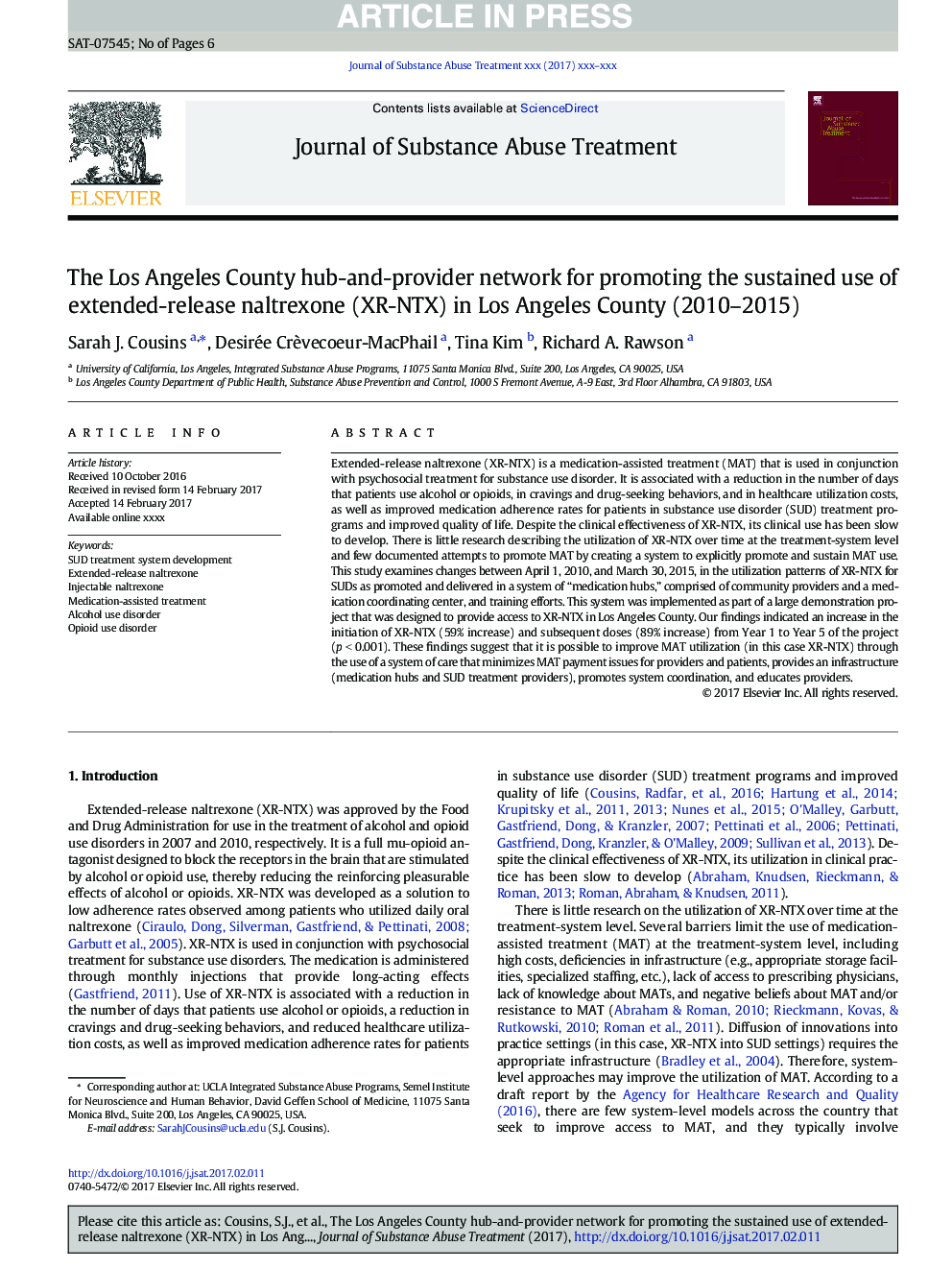| Article ID | Journal | Published Year | Pages | File Type |
|---|---|---|---|---|
| 6801900 | Journal of Substance Abuse Treatment | 2018 | 6 Pages |
Abstract
Extended-release naltrexone (XR-NTX) is a medication-assisted treatment (MAT) that is used in conjunction with psychosocial treatment for substance use disorder. It is associated with a reduction in the number of days that patients use alcohol or opioids, in cravings and drug-seeking behaviors, and in healthcare utilization costs, as well as improved medication adherence rates for patients in substance use disorder (SUD) treatment programs and improved quality of life. Despite the clinical effectiveness of XR-NTX, its clinical use has been slow to develop. There is little research describing the utilization of XR-NTX over time at the treatment-system level and few documented attempts to promote MAT by creating a system to explicitly promote and sustain MAT use. This study examines changes between April 1, 2010, and March 30, 2015, in the utilization patterns of XR-NTX for SUDs as promoted and delivered in a system of “medication hubs,” comprised of community providers and a medication coordinating center, and training efforts. This system was implemented as part of a large demonstration project that was designed to provide access to XR-NTX in Los Angeles County. Our findings indicated an increase in the initiation of XR-NTX (59% increase) and subsequent doses (89% increase) from Year 1 to Year 5 of the project (p < 0.001). These findings suggest that it is possible to improve MAT utilization (in this case XR-NTX) through the use of a system of care that minimizes MAT payment issues for providers and patients, provides an infrastructure (medication hubs and SUD treatment providers), promotes system coordination, and educates providers.
Keywords
Related Topics
Life Sciences
Neuroscience
Biological Psychiatry
Authors
Sarah J. Cousins, Desirée Crèvecoeur-MacPhail, Tina Kim, Richard A. Rawson,
